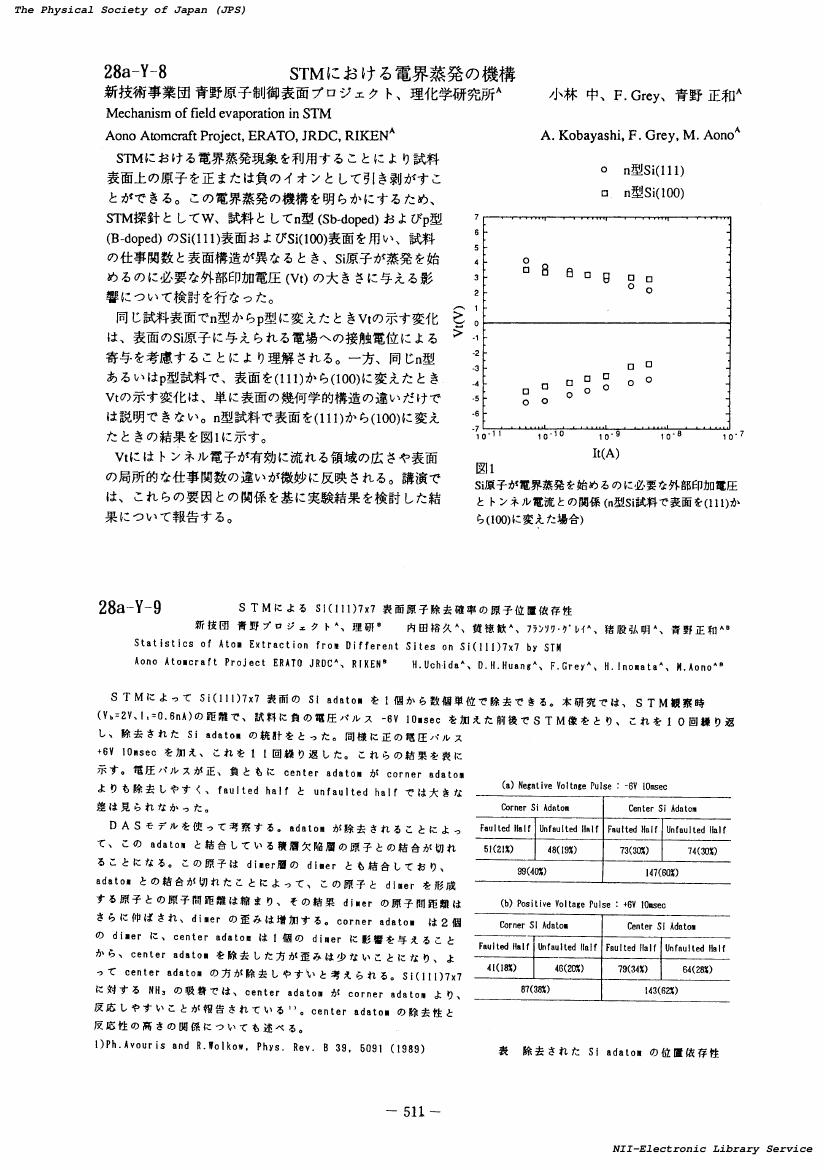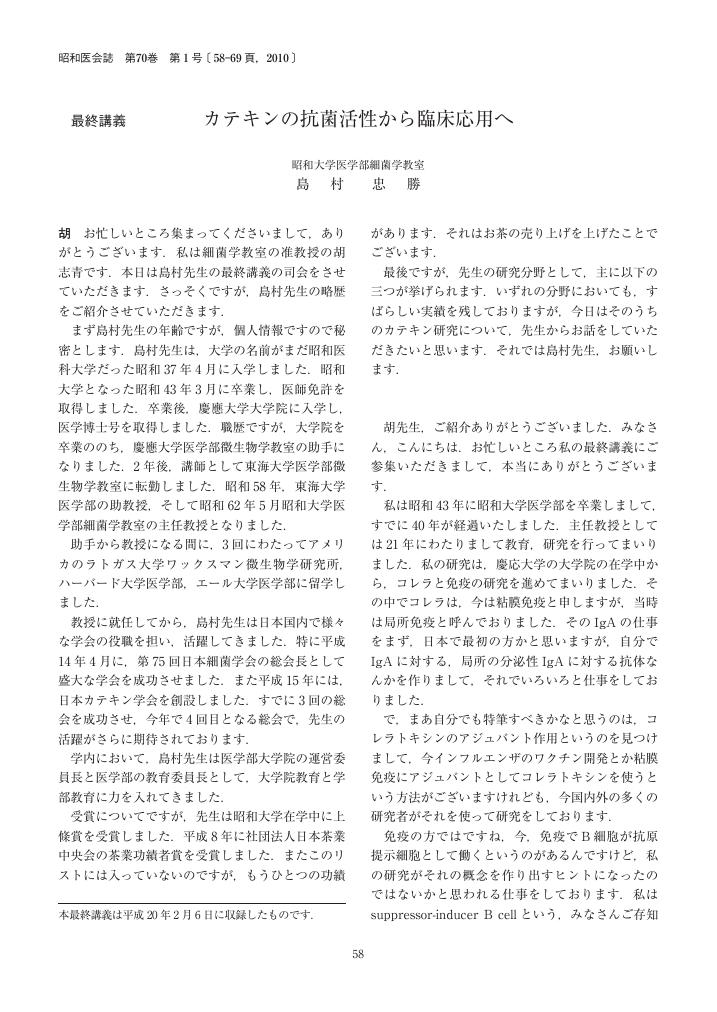4 0 0 0 IR 「知識人」漱石から「作家」漱石へ --「木曜会」にみる師弟関係の構造と変容--
- 著者
- 椎名 健人
- 出版者
- 京都大学大学院教育学研究科
- 雑誌
- 京都大学大学院教育学研究科紀要 (ISSN:13452142)
- 巻号頁・発行日
- no.66, pp.325-348, 2020-03-26
明治・大正時代の英文学者及び作家である夏目漱石とその門弟たちが織り成していた共同体(=「木曜会」)における師弟関係のあり方について社会学的観点から分析する。日本文壇内部における共同体の性質が1905年前後を境に硯友社的なギルドから大学教育を受けた人間による知的サロンへとその形態を変化させる中において誕生した文学サロンの一つである「木曜会」は、実質的には1903年-1916年まで機能したが、そこに集まった漱石門弟はそれぞれの世代ごとに異なる特徴を持っている。「木曜会」における師弟関係の構造と変容を分析することによって、アカデミズムと結びつく形で社会的権威を獲得していくに際して漱石とその門弟たちが果たした役割と、後に大正文壇の中心を担った芥川龍之介らの作家たちの文学的野心の起源について明らかにする。This study analyzes the mentoring relationship between Sōseki Natsume, a novelist and a scholar of English literature in the Meiji and Taishō Period, and his pupils from a sociological viewpoint. The nature of the community within the Japanese literary world changed its form from a guild-like form to an intelligent salon with university education around 1905. Although "Mokuyoukai", , " an intellectual salon by Soseki and his pupils, lasted from 1903 to 1916, members of "Mokuyoukai" had different characteristics for each generation. This study analyzes the structure and transformation of the mentoring relationship in ""Mokuyoukai", , " and clarifies the role played by Soseki and his pupils in acquiring the social authority of the literary world in connection with academia, as well as clarifying the origin of the literary ambitions of authors, such as Ryūnosuke Akutagawa, who played a central role in the literary world in the Taishō period.
4 0 0 0 マルクスのプロレタリア独裁概念について
- 著者
- 田上 孝一
- 出版者
- 東京電機大学
- 雑誌
- 東京電機大学総合文化研究 (ISSN:1348799X)
- 巻号頁・発行日
- no.13, pp.305-309, 2015-12
4 0 0 0 OA I-B-12 早発閉経婦人における漢方治療の試み
- 著者
- 小山,嵩夫
- 出版者
- 和漢医薬学会大会
- 雑誌
- 和漢医薬学会大会要旨集
- 巻号頁・発行日
- vol.8, 1991-08-01
4 0 0 0 OA 19世紀初頭のエディンバラにおける骨相学 : 1803-1828年
- 著者
- 川名 雄一郎 KAWANA Yuichiro
- 出版者
- 名古屋大学大学院経済学研究科
- 雑誌
- 経済科学 (ISSN:00229725)
- 巻号頁・発行日
- vol.67, no.3, pp.41-52, 2020-03
The remarkable flourishing of phrenology, a morphological study of brain initially conceived by a German neuroanatomist, Franz Joseph Gall in the 1790s, became the subject of much scholarly attention in early nineteenth-century Britain, and especially in Edinburgh, where the dispute about phrenology commenced with Thomas Brown's attack on Gall which appeared as early as 1803, and was followed by a number of other criticisms, including John Gordon's severe critique of Johann Gaspar Spurzheim in 1815, Francis Jeffrey's scathing article on George Combe's work in 1826, and William Hamilton's series of criticisms in the 1820s levelled against anatomical knowledge on which phrenology was founded. This article examines the nature of these anti-phrenological arguments, pointing out the intellectual milieu of Edinburgh at the turn of the nineteenth century, in which two learning and teaching traditions, namely mental philosophy (common sense philosophy originated in the works of Thomas Reid and developed by Dugald Stewart and Thomas Brown) and anatomy (thanks to the Monro family and those involved in the Royal College of Surgeons of Edinburgh), were established.
4 0 0 0 OA 28a-Y-9 STMによるSi(111)7x7 表面原子除去確率の原子位置依存性
- 著者
- 内田 裕久 黄 徳歓 グレイ フランソワ 猪股 弘明 青野 正和
- 出版者
- 一般社団法人 日本物理学会
- 雑誌
- 秋の分科会予稿集 1992.2 (ISSN:2433118X)
- 巻号頁・発行日
- pp.511, 1992-09-14 (Released:2018-03-22)
- 著者
- 長谷川 貴彦 ハセガワ タカヒコ HASEGAWA Takahiko
- 出版者
- 東京外国語大学海外事情研究所
- 雑誌
- Quadrante : クァドランテ : 四分儀 : 地域・文化・位置のための総合雑誌 (ISSN:13445987)
- 巻号頁・発行日
- no.15, pp.11-18, 2013-03
4 0 0 0 OA カテキンの抗菌活性から臨床応用へ
- 著者
- 島村 忠勝
- 出版者
- 昭和大学学士会
- 雑誌
- 昭和医学会雑誌 (ISSN:00374342)
- 巻号頁・発行日
- vol.70, no.1, pp.58-69, 2010-02-28 (Released:2011-05-27)
- 被引用文献数
- 1
4 0 0 0 IR 中島敦とラフカディオ・ハーンの作品比較--『光と風と夢』と『佛領西印度の二年間』を中心に
- 著者
- 洪 瑟君
- 出版者
- 広島大学大学院教育学研究科
- 雑誌
- 広島大学大学院教育学研究科紀要 第二部 文化教育開発関連領域 (ISSN:13465554)
- 巻号頁・発行日
- no.56, pp.267-273, 2007
In the past, researchers believed that Atsushi Nakajima's 'the Light, the Wind, and the Dream' was created based on the associated materials of Robert Louis Stevenson's works, essays, critical biographies, letters, and so on. In this text, it reexamined the materials of 'the Light, the Wind, and the Dream' by checking Atsushi Nakajima's inventory of books and his pocketbooks. From those information, we shall know Nakajima deepened his yearn for the South after his trip to Ogasawara Islands, and therefore started to read Lafcadio Hearn's 'Two Years in the French West Indies' while he finished his trip to go back to Yokohama. While Nakajima wrote 'the Light, the Wind, and the Dream', he obviously didn't only take the materials associated with Robert Louis Stevenson, but also introduced his own experience of Ogasawara Islands into his work. Moreover, through the comparison of 'the Light, the Wind, and the Dream' and 'Two Years in the French West Indies', we shall see that Nakajima learned the technique of portrait and the sensation to tropical islands from Lafcadio Hearn's 'Two Years in the French West Indies', and therefore presented the technique in 'the Light, the Wind, and the Dream'.
4 0 0 0 OA 最近の飛行制御システム
- 著者
- 金井 喜美雄
- 出版者
- 一般社団法人 日本航空宇宙学会
- 雑誌
- 日本航空宇宙学会誌 (ISSN:00214663)
- 巻号頁・発行日
- vol.30, no.340, pp.272-287, 1982-05-05 (Released:2009-05-25)
- 参考文献数
- 7
4 0 0 0 OA 琉球アクセント調査のための類別語彙の開発 : 沖永良部島の調査から
- 著者
- 松森 晶子
- 出版者
- 日本音声学会
- 雑誌
- 音声研究 (ISSN:13428675)
- 巻号頁・発行日
- vol.4, no.1, pp.61-71, 2000-04-28 (Released:2017-08-31)
- 被引用文献数
- 2
Based on the regular correspondence between the Kindaichi tonal classes, originally developed for mainland Japanese dialects, and those of Ryukyuan dialects, this study proposes that the accentual system of proto-Ryukyuan had at most a three-way tonal distinction for words of up to three syllables. Then, assuming that these tonal classes in proto-Ryukyuan can be categorized into at least three large groups, each being supposed to share certain common characteristics in the proto-Ryukyuan accentual system, these are referred to as Pattern Categories (Keiretsu) A, B, and C in this paper. This study then proposes lists of words belonging to each category, based on research conducted on Okinoerabu Island in the Amami region, where the dialect system is known to retain the maximum numbers of tonal distinctions within the Ryukyuan dialect area.
4 0 0 0 肩関節障害のスタンダードテクニック:─機能と評価について─
- 著者
- 千葉 慎一
- 出版者
- 公益社団法人 日本理学療法士協会
- 雑誌
- 理学療法学Supplement
- 巻号頁・発行日
- vol.43, pp.52-60, 2016
4 0 0 0 山陽遺稿
- 著者
- 頼襄著
- 出版者
- 須原屋茂兵衞 : 岡田屋嘉七
- 巻号頁・発行日
- 1841
4 0 0 0 OA すぬけ効果を考慮した分子定数の決定法
- 著者
- 上出 健二 河合 徹
- 出版者
- 公益社団法人 高分子学会
- 雑誌
- 高分子化學 (ISSN:00232556)
- 巻号頁・発行日
- vol.20, no.220, pp.506-511, 1963-08-25 (Released:2010-10-14)
- 参考文献数
- 28
- 被引用文献数
- 3 4
固有粘度-分子量関係式 [η] =KmMaの係数aをすぬけ効果の寄与と体積効果の寄与に分離定量する三つの方法を提案した。すでに前報で確立した二つの固有粘度-分子量関係式を利用する粘度式法, 固有粘度と分子量第2ビリアル係数についてのKrigbaumの関係にすぬけ効果を考慮した改良Krigbaum法, およびaとexpansion factor との間のVoeksの関係にすぬけ効果を考慮した改良Voeks法である。これらの方法を実験データに適用した。三つの方法で得られたすぬけ効果の寄与の程度を表わすパラメータは良く一致した。高分子のすぬけ効果の大きさは次の順序で大きくなる。ポリ酢酸ビニル=<アタクチックポリスチレン<イソタクチックポリスチレン<ポリビニルアルコール<ポリアクリロニトリル三硝酸セルロース
4 0 0 0 OA 火砕流とその災害
- 著者
- 荒牧 重雄
- 出版者
- 公益社団法人 東京地学協会
- 雑誌
- 地学雑誌 (ISSN:0022135X)
- 巻号頁・発行日
- vol.95, no.7, pp.489-495, 1987-01-25 (Released:2009-11-12)
- 参考文献数
- 20
4 0 0 0 OA ジェイン・オースティンの受容 : 明治期から昭和初期にかけて
- 著者
- 岩上 はる子
- 出版者
- 滋賀大学教育学部
- 雑誌
- 滋賀大学教育学部紀要, Ⅱ, 人文科学・社会科学 (ISSN:13429264)
- 巻号頁・発行日
- no.59, pp.1-8, 2009
4 0 0 0 古代武器研究
- 著者
- 古代武器研究会 滋賀県立大学考古学研究室 [編]
- 出版者
- 古代武器研究会
- 巻号頁・発行日
- 2000
4 0 0 0 OA 不良兒童の研究
- 著者
- 佐々木 鶴二
- 出版者
- The Japanese Society of Health and Human Ecology
- 雑誌
- 民族衛生 (ISSN:03689395)
- 巻号頁・発行日
- vol.4, no.5-6, pp.343-391,en1, 1935-12-20 (Released:2010-11-19)
I have principally studied juvenile delinquents who were taken into reformatories; and the causes of their errors which were fund chiefly in their heredity and environment. The various results of my investigatim lespecting their heredity revealed that there were many insane or feeble-minded persons, Erni confirmed criminals among their cloae relatives. They seem to have inherited many defects from their parents, such as congenital weak character and mental degeneration. Especially, syphilis hereditaria was proved in 19.9% by means of Wasserman's reaction. The result of mental test proved none of very supe for and supeiior: only 3.1% were high average, 16.9 % were average, 42.1% low average, 27.8 % were inferior, and 9.8 % were very inferior. These figures show us that there are very few of the high intellcctual among them, but they are generally inferior in that respect.The study of their environment shows that many of them came from poor families. The most remarkable fact 13 that many of them are orphans. Those who are not in orphanage hold totally only 30.5%. Only a few were brought up by their parents, and the rest were separate from thcm by death or other circumstances. Those who were separated from their parents at an early age were generally found to talce a poorer course in inverse proportion to their ages. Only 8.6% had good friends, the rest had none or only vicious ones. Thus we can easily judge that they are greatly tempted by vicious companions. Their school recorie were generally poorerthan the; r Inte ligence quotient. This is perhaps due to their family conditions and individualities. Among the delinquents there were also many who were suffering from urinal incoltinance in sleep; those who were not suffering from it over five years of age, were only 32.6%. As for their blood groups, they agreed w th those of the Japanese in general, and no Sfseciality was found about them. If there were any relation between the blood groups and their dispositions, as is insisted upon by some scholars, there must be to some extent any Peculiarity in blood groups of juvenile delinquents but thies was not to find.With regard to the immediate causes of their crimes, the needs of money to spend on sweets and to visit cinemas, were the most general; the temptation of vicious friends, idleness, and degeneration came next in number; and some of them were also found to be delinquent after having been brought up in an indulgent way, or with excessive reproaches. As for the order of their birth, it seems that first born children were in the majority, but comparatively few were found among the eldests and the youngests when there were more than two in a family; and many were found in children who were in the middle among childerns of the same paren
4 0 0 0 OA [日本工業倶楽部調査課]調査報告
- 出版者
- 日本工業倶楽部調査課
- 巻号頁・発行日
- vol.号外10, 1931



